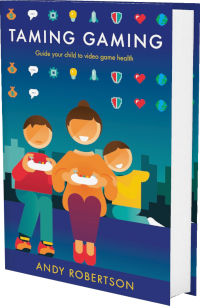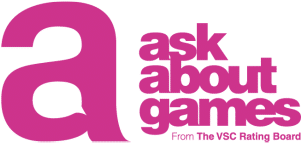 Android
Android iOS
iOS Mac
Mac Switch
Switch Wii
Wii Wii U
Wii U PC
PC PS4
PS4 PS5
PS5 Xbox One
Xbox One Xbox X|S
Xbox X|SWe've documented 33 accessibility features for Gone Home, including Fully Voiced (Or No Speech), Large Subtitles, Large Text, Guaranteed Progress and Low Pressure. Its accessibility is strongest in Controls and Getting Started but it also has features in Reading, Visual, Navigation and Audio to reduce unintended barriers.
This report is created with input from accessibility experts and the player community to help people find games that have the accessibility features they require. Once you have found potential games on the database, there are excellent specialist accessibility sites that offer in-depth reviews to guide your purchasing decisions.
External examiner, Steve Gaynor, first checked Gone Home accessibility a year ago. It was re-examined by Andrew Robertson and updated a year ago.
 Accessibility Notes
Accessibility Notes
- All lights in the house starting On (for players who might be scared of the dark).
- All doors unlocked from the beginning (for players who want to explore the house in a totally open-ended manner, or who don't want to deal with the challenge of finding keys for locks)
You can access and re-play the audio or re-read the text of any audio diary you've found in the game at any time from the game menu.
All of the story audio diaries are subtitled, and all handwritten and printed text can optionally display larger, more legible overlaid font text. A few pieces of in-world audio dialogue (an answering machine message, a repeating weather announcement on a television, the lyrics of music played from cassette tapes) do not have subtitles.
By default when you aim at an interactive object it is colored with a blue highlight, as well as showing a text description of what will happen when you interact with it. Interactive objects are not highlighted or outlined from further away than the player can interact with them.
 Game Details
Game Details
Release Date: 15/08/2013, updated in 2016
Out Now: Mac, PC, PS4, Switch, Xbox One and iOS
Skill Rating: 11+ year-olds
Players: 1
Genres: Adventure, Narrative and Puzzle
Accessibility: 33 features
Components: 3D First-Person
Developer: Fullbright Games (@FullbrightGames)
Costs: Purchase cost
 Controls
Controls
We've documented 11 accessibility features for Controls in Gone Home which deal with how you control the game, different options for alternative inputs and whether you can remap these settings to suit your needs.
Gamepad
Can play with the following:
Multiple Buttons & Two Sticks: Can play with multiple buttons and two sticks.
Mouse And Keyboard
Can play with the following:
Mouse and Keys: Can play with mouse and multiple keys.
Mouse and Controller: Can play with mouse and controller simultaneously.
Remap Controls
Can customise the controls for the game as follows:
Remap Mouse and Keyboard: Can remap mouse and keyboard key bindings, on systems that support these controls.
Remap Extra Mouse Buttons: Can remap additional buttons on mice that provide more than the two standard buttons, on systems that support these controls.
Invert X/Y Axis: Can invert the direction required to control looking and aiming. This enables you to match your instinctive orientation when looking.
Button Combinations
Specific button operation required to play
Holding Down Buttons Optional: Holding down buttons for prolonged periods (a second or more) is not required or can be switched to toggling the action on and off. This is in addition to the movement stick/button which is not considered a hold for this purpose.
Rapid Repeated Pressing Optional: Quick, repeated button pressing (more than 2 times a second) is not required, can be skipped or switched to holding a button to trigger a repeated action.
No Simultaneous Buttons: Only one button or key required at a time, in addition to direction stick(s).
Controller Vibration
Vibration Optional: Controller vibration not used in the game or you can disable it.
Sensitivity
You can adjust
Adjust Mouse/Stick/Touch Sensitivity: Adjust how sensitive touch/mouse/stick controls are.
Similar Games With More Accessibility Features for Controls
If you want to play Gone Home, but it doesn't offer the Controls accessibility features you require, these similar games extend the Controls accessibility:
- The Wreck (13 Controls Features)
- Tacoma (13 Controls Features)
- The Talos Principle 2 (12 Controls Features)
 Difficulty
Difficulty
We haven’t documented any accessibility features for Difficulty in Gone Home which deal with how you can adjust the challenge of play, and whether this is locked once chosen or can be adjusted as you play. The following games are similar to Gone Home, and offer accessibility features for Difficulty:
- Paradise Killer (1 Difficulty Feature)
 Getting Started
Getting Started
We've documented 8 accessibility features for Getting Started in Gone Home which deal with what support is offered to get started with the game. This includes customising the experience when you first open the game via any onboarding processes it provides as well as tutorials and other assistance when you first start playing.
Assistance Getting Starting
These features aid your play of the game in terms of cognitive load on learning controls, dealing with pressure and coping with the environment and challenges.
Tutorials: There are helpful tutorials and instructions on how to play. Information is provided in a timely manner, with appropriate level of detail.
Practice Area: You can practice freely without opponents or time pressures. This can be a specific practice option, or the ability to play levels with the easiest opponents to improve understanding and skill.
View Control Mapping: You can view a map of controls during play. This clearly displays the mappings of actions to buttons/keys/mouse/keyboard without having to leave the game. This includes games that always display buttons to press during play.
Reaction-Time Not Critical: Individual game actions don’t need quick reactions, or there are settings to lower the requirement for quick reactions. This means you don't need to quickly press a button in response to an on-screen prompt, target a fast-moving target or skillfully complete a scenario against the clock.
Low Pressure: Game tasks aren't time-limited or there's a low-pressure mode. This avoids the pressure of being put on the clock for overarching missions, or failing tasks because you didn't reach a destination in time.
Assistance For Progressing
These features aid your progress through the game offering different ways of maintaining your progression.
Guaranteed Progress With God Mode: There is no fail state for any game level, where you lose progress or have to start again. Or there are options to make failing impossible: infinite health or lives, unlimited time. Sometimes called God Mode or Unfailable.
Assisted Recall for Narrative and Dialogue: The game enables you to review the history of conversations or provides highlights of the information you gather in a form you can review.
Save Progress Anytime: The game automatically saves progress or you can save any time. This doesn’t mean you never lose progress, but it does mean you can stop whenever you want (without having to get to a save point) without losing progress.
Similar Games With More Accessibility Features for Getting Started
If you want to play Gone Home, but it doesn't offer the Getting Started accessibility features you require, these similar games extend the Getting Started accessibility:
- A Walk With Yiayia (12 Getting Started Features)
- The Talos Principle 2 (11 Getting Started Features)
- Tacoma (10 Getting Started Features)
 Reading
Reading
We've documented 5 accessibility features for Reading in Gone Home which deal with how much reading or listening comprehension is required, how well the game provides visual and audible access to the text and whether subtitles and captions are a good fit for purpose.
Reading Level
How much reading is required to play the game's main path or story and how complex the language is. The presence of voiced characters doesn't reduce this requirement, as it's recorded as a separate datapoint.
Moderate Reading: Moderate reading required. The quantity and complexity of reading are at a level that a high school student (14-year-old) would appreciate.
Text Visibility
Large Clear Text: All essential text is large and clear or can be adjusted to be. The general text used throughout the game in menus, instructions and other key information (excluding subtitles that are assessed separately) is at least 1/20 (46 pixels on 1080 screen) the height on landscape screens and at least 1/40 height on portrait screens. We base this on the full line-height, including the space above and below the letters.
Subtitles
Large Clear Subtitles: Subtitles are large, clear and of good contrast. They are at least 1/20 (46 pixels on 1080 screen) the height of a landscape screen and at least 1/40 height on portrait screens, or can be adjusted to be. We base this on the full line-height, including the space above and below the letters. Considered separately from the general text of the game, the subtitles are large, clear and of good contrast.
Some Speech Subtitled: Some spoken content has subtitles. This reduces the pressure on interpreting all the spoken content, although not everything is captured textually.
Voice Acted
All Dialogue is Voice Acted (Or No Speech In Game): All of the game dialogue and narrative can be voiced, or there is no speech in the game. This means there is no requirement to read the dialogue and narrative text to play the game.
Similar Games With More Accessibility Features for Reading
If you want to play Gone Home, but it doesn't offer the Reading accessibility features you require, these similar games extend the Reading accessibility:
- A Walk With Yiayia (7 Reading Features)
- I Am Dead (7 Reading Features)
- Lake (6 Reading Features)
- The Stanley Parable (6 Reading Features)
 Navigation
Navigation
We've documented 3 accessibility features for Navigation in Gone Home which deal with how the game provides guidance and assistance to navigate its worlds. These are only for games that have traversal and exploration in 2D and 3D spaces.
Clarity
Large Clear Navigation: The in-game navigation and maps are clear to read. They offer large text and offer markers that are large and of high contrast. Where text or information is small, there are settings to zoom-in and increase visibility.
Head-Up Display
Game Map: View a map of the game world during play, with the landscape, points of interest and missions highlighted throughout the entire game. This enables the orientation of the player and the world, confirming a direction of movement and the location of destinations or points of exploration.
Menu Navigation
Digital Menu Navigation: Menu choices with Gamepad can be made without using an analogue stick to guide a cursor to a selection. For example, using D-Pad, buttons or the Stick to change menu selection in a single action.
Similar Games With More Accessibility Features for Navigation
If you want to play Gone Home, but it doesn't offer the Navigation accessibility features you require, these similar games extend the Navigation accessibility:
- Paradise Killer (7 Navigation Features)
- The Talos Principle 2 (5 Navigation Features)
- Lake (5 Navigation Features)
- Tacoma (5 Navigation Features)
 Visual
Visual
We've documented 4 accessibility features for Visual in Gone Home which deal with how you can adjust the visuals to suit your needs, and offer additional information if you can't hear the game.
Interactive Elements
Outline Interactive Elements: Characters, platforms and enemies can be outlined or highlighted for visibility. This can be with a large border around the character or a special visual mode that adjust the colour to make characters more visible.
Visual Distractions
No Screen Shake: No screen shake effect or it is included but it can be disabled. This includes the absence of screen shake for dramatic effect as well as to indicate hits on a target.
No Busy Backgrounds: No distracting backgrounds or you can make them static or blank. This includes the absence of other movement elements in the background that might distract or confuse the action. Where foreground contrast is high, this includes games with some movement in the background that doesn't make it overly difficult to distinguish what is happening.
Colour Options
Colour Blind Friendly: Game doesn’t rely on colour or can switch to colour blind friendly mode with double coding or similar way to avoid colour dependance.
Similar Games With More Accessibility Features for Visual
If you want to play Gone Home, but it doesn't offer the Visual accessibility features you require, these similar games extend the Visual accessibility:
- Paradise Killer (7 Visual Features)
- Rivals (7 Visual Features)
- A Walk With Yiayia (6 Visual Features)
- The Talos Principle (6 Visual Features)
 Audio
Audio
We've documented 2 accessibility features for Audio in Gone Home which deal with how you can adjust the audio of the game and whether audio cues compensate for aspects of the game that are hard to see.
Adjustable Audio
Balance Audio Levels: Set music and game sound effects separately. This enables you to select your preference as well as ensure critical game sounds aren't obscured by other audio.
Play Without Hearing
Play Without Hearing: No audio cues are necessary to play the game well.
Similar Games With More Accessibility Features for Audio
If you want to play Gone Home, but it doesn't offer the Audio accessibility features you require, these similar games extend the Audio accessibility:
System Accessibility Settings
In addition to the accessibility features provided in the game, you can also use system-wide accessibility settings:
Nintendo Switch
Nintendo Switch has some built-in features, including a lockable zoom, that can be used on all games.
PC
Windows has extensive accessibility features. Some, like colour correction, work with games. Lots of accessibility software can be used with PC games, from voice recognition to input device emulators.
PlayStation 4
PlayStation 4 has a range of accessibility settings. Some are system only, some work in games (invert colours and button mapping).
Xbox One
Xbox One has a system features, the excellent co-pilot share controls mode and adaptive controller support for all games.
iOS
iOS has a very extensive suite of accessibility settings including ways to navigate with voice and comprehensive screen reading, though most of the features don't work with games.
Read more about system accessibility settings.
Accessibility Report supported by VSC Rating Board, PlayabilityInitiative and accessibility contributors












